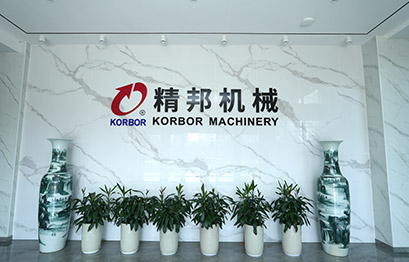What processing methods and equipment are used in the roughing, semi-finishing and finishing stages of the locomotive camshaft? How do these methods and equipment ensure processing accuracy and surface quality?
In the roughing stage, KORBOR mainly uses two processes: turning and milling. Turning is suitable for the initial forming of the camshaft body. Through a large CNC lathe, the blank is processed with a high-speed rotating tool to process the outer circle, end face and preliminary groove. Milling is mainly used to remove a large amount of material to form the basic contour of the cam. This process usually uses a multi-axis linkage milling machine, which can efficiently and accurately remove materials according to the preset three-dimensional model.
To ensure the accuracy and efficiency of the roughing stage, KORBOR selected the world's leading CNC machining center. These equipment are equipped with high-precision spindles and high-rigidity tool systems, which effectively reduce vibration and ensure the stability and accuracy of processing. At the same time, through integrated CAM software programming, the optimization of the processing path is achieved, unnecessary material removal is reduced, and the processing efficiency and material utilization are improved. In addition, strict tool management and wear monitoring mechanisms ensure that the tools are always in the best condition during the processing process, further ensuring the processing accuracy.
Entering the semi-finishing stage, KORBOR adopts more sophisticated turning and grinding processes. Turning at this stage is mainly used to further correct the size and shape of the camshaft to make it close to the final design requirements. Grinding focuses on improving surface quality and dimensional accuracy, especially for the fine carving of the cam profile, using a high-precision cam grinder and a diamond grinding wheel for micro-removal to achieve micron-level processing accuracy.
KORBOR's semi-finishing equipment is all top-level in the industry, such as a CNC cam grinder with a closed-loop control system, which can monitor and compensate for processing errors in real time to ensure that every grinding can meet extremely high precision requirements. In addition, in order to meet the processing needs of camshafts of different materials and hardness, KORBOR is equipped with grinding wheels of various particle sizes and hardnesses, combined with advanced grinding wheel shaping technology, which effectively avoids the influence of grinding wheel wear on processing accuracy. In the semi-finishing stage, KORBOR also introduced online detection systems, such as laser measuring instruments, to measure the camshaft in processing in real time, adjust the processing parameters in time, and ensure that each process is accurate and correct.
The finishing stage is a key link in camshaft manufacturing. KORBOR uses superfine grinding and polishing technology to achieve mirror-like surface quality and extremely high shape accuracy. Superfine grinding uses superhard abrasives and extremely small feed rates to further refine the surface roughness, while polishing removes tiny surface defects by chemical or mechanical means to improve surface finish.
To achieve this goal, KORBOR introduced advanced superfine grinding machines and polishing equipment, which not only have extremely high processing accuracy, but also can flexibly adjust process parameters according to material properties and processing requirements. Especially in the polishing process, KORBOR uses an automated polishing line, combined with an intelligent control system, to achieve uniformity and consistency in the polishing process, greatly improving production efficiency and product quality. In addition, KORBOR also pays attention to environmental control, such as a constant temperature and humidity workshop environment, which reduces the impact of temperature changes on processing accuracy and ensures that high-quality camshafts can be produced under any conditions.
Throughout the entire processing process, KORBOR's technical advantages are not only reflected in advanced processing methods and equipment, but also in its strict control of quality and continuous improvement culture. Following the IATF16949:2016 quality management system standard, KORBOR implements multi-level and all-round quality control in every link from raw material inspection to finished product testing. The efficient production line and strict quality management system ensure that the mass-produced Taiwan&Italy motorcycle market camshafts have consistent high quality. In addition, KORBOR also has a research and development team composed of senior engineers and technicians, constantly exploring the application of new technologies and new materials, and leading the industry development with technological innovation.

 English
English 中文简体
中文简体 русский
русский Español
Español











